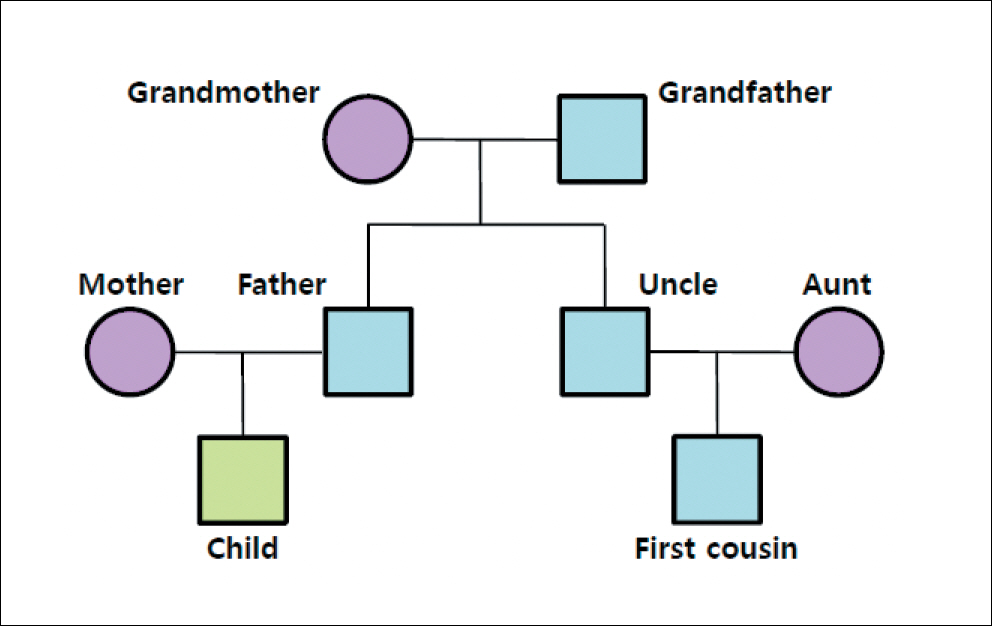Korean J Leg Med.
2013 May;37(2):57-65. 10.7580/kjlm.2013.37.2.57.
Analysis of Kinship Index Distributions in Koreans Using Simulated Autosomal STR Profiles
- Affiliations
-
- 1Department of Forensic Medicine, Yonsei University College of Medicine, Seoul, Korea. kjshin@yuhs.ac
- 2DNA Analysis Laboratory, DNA Forensic Division, Supreme Prosecutors' Office, Seoul, Korea.
- KMID: 1433180
- DOI: http://doi.org/10.7580/kjlm.2013.37.2.57
Abstract
- Kinship testing in forensic casework is largely based on a likelihood ratio (LR) approach with short tandem repeat (STR) markers; however, in order to efficiently identify potential relatives in a specific population, the threshold values for kinship prediction should be determined by analyzing the kinship index distributions of the population in question. In this study, 250,000 DNA profiles were simulated using allele frequencies at 20 autosomal STR loci in Koreans, then the LRs were calculated for true close relatives and unrelated pairs. The LR distributions in related and unrelated pairs under a given relationship were compared in 2 sets of 13 Combined DNA Index System (CODIS) and 20 STR profiles. Using 13 CODIS STRs, true relatives in parent/child and full-sibling relationships were sufficiently discriminated from unrelated pairs with LR thresholds of 1,000 and 100, respectively. However, the CODIS STRs lacked the discriminatory power to differentiate between related and unrelated pairs in uncle/nephew and first cousin relationships due to high false-positive and false-negative rates with a LR threshold of 10. Increasing the number of STR loci to 20 increased discrimination of close relatives, but high false results remained in uncle/nephew and first cousin relationships. The kinship index data from this study will help make decisions on various kinship testing and familial searching in Koreans.
Keyword
MeSH Terms
Figure
Cited by 2 articles
-
Classification of Common Relationships Based on Short Tandem Repeat Profiles Using Data Mining
Su Jin Jeong, Hyo Jung Lee, Soong Deok Lee, Seung Hwan Lee, Su Jeong Park, Jong Sik Kim, Jae Won Lee
Korean J Leg Med. 2019;43(3):97-105. doi: 10.7580/kjlm.2019.43.3.97.Limitation of Regular Autosomal STR Testing for Paternity within an Isolated Population
Sohee Cho, Hyung Jin Yu, Hee Jin Seo, Jisung Han, Yoonsoo Kim, Soong Deok Lee
Korean J Leg Med. 2014;38(4):175-179. doi: 10.7580/kjlm.2014.38.4.175.
Reference
-
1. Butler JM, Hill CR. Biology and genetics of new autosomal STR loci useful for forensic DNA analysis. Forensic Sci Rev. 2012; 24:15–26.2. Butler JM. Fundamentals of forensic DNA typing. 2nd ed.San Diego: Elsevier Academic Press;2009. p. 489–94.3. Weir BS, Anderson AD, Hepler AB. Genetic relatedness analysis: modern data and new challenges. Nat Rev Genet. 2006; 7:771–80.
Article4. Shin KJ, Lee HY, Yang WI, et al. Statistical Interpretation in Making DNA-based Identifications of Mass Victims. Korean J Leg Med. 2008; 32:55–60.5. Tamaki K, Kaszynski RH, Yuan QH, et al. Likelihood evaluation using 15 common short tandem repeat loci: a practical and simulated approach to establishing personal identification via sibling/parental assessments. Transfusion. 2009; 49:578–84.
Article6. O’ Connor KL, Butts E, Hill CR, et al. Evaluating the effect of additional forensic loci on likelihood ratio values for complex kinship analysis. Proceedings of the Twenty-first International Symposium on Human Identification. 2010.7. Ge J, Budowle B, Chakraborty R. Choosing relatives for D-NA identification of missing persons. J Forensic Sci. 2011; 56(Suppl 1):S23–8.
Article8. Ge J, Chakraborty R, Eisenberg A, et al. Comparisons of familial DNA database searching strategies. J Forensic Sci. 2011; 56:1448–56.
Article9. Park JH, Hong SB, Kim JY, et al. Genetic variation of 23 autosomal STR loci in Korean population. Forensic Sci Int Genet. 2013; 7:e76–7.
Article10. Li CC, Sacks L. The derivation of joint distribution and correlation between relatives by the use of stochastic matrices. Biometrics. 1954; 10:347–60.
Article11. Gjertson DW. The effect of an isolated single-locus inconsistency in the statistical evaluation of paternity. Walker RH, editor. editor.Paternity testing accreditation requirements manual of the American Association of Blood Banks. 3rd ed.Bethesda: American Association of Blood Banks;1998. p. 98–9.12. Yan J, Liu Y, Tang H, et al. Mutations at 17 STR loci in Chinese population. Forensic Sci Int. 2006; 162:53–4.
Article13. Phillips C, Garcl′a-Magarin ̃os M, Salas A, et al. SNPs as supplements in simple kinship analysis or as core markers in distant pairwise relationship tests: When do SNPs add value or replace well-established and powerful STR tests? Transfus Med Hemother. 2012; 39:202–10.
Article14. Schneider PM. Beyond STRs: The role of diallelic markers in forensic genetics. Transfus Med Hemother. 2012; 39:176–80.
Article15. Jobling MA, Tyler-Smith C. Fathers and sons: the Y chromosome and human evolution. Trends Genet. 1995; 11:449–56.
Article16. Butler JM, Levin BC. Forensic applications of mitochondrial DNA. Trends Biotechnol. 1998; 16:158–62.
Article17. Budowle B, Shea B, Niezgoda S, et al. CODIS STR loci data from 41 sample populations. J Forensic Sci. 2001; 46:453–89.
Article18. O’ Connor KL, Tillmar AO. Effect of linkage between vWA and D12S391 in kinship analysis. Forensic Sci Int Genet. 2012; 6:840–4.19. Korean Speaking Working Group of ISFG, Seo SB, Lee SH, et al. DNA database searching using genetic relationship. Korean J Leg Med. 2011; 35:92–7.20. Bieber FR, Brenner CH, Lazer D. Human genetics. Finding criminals through DNA of their relatives. Science. 2006; 312:1315–6.21. Ge J, Budowle B. Kinship index variations among populations and thresholds for familial searching. PLoS One. 2012; 7:e37474.
Article
- Full Text Links
- Actions
-
Cited
- CITED
-
- Close
- Share
- Similar articles
-
- Web-based Y-STR Database for Haplotype Frequency Estimation and Kinship Index Calculation
- Mutation Analysis in STR Loci for Familial Identification
- A Kinship Analysis of Ancient Human Bones and Teeth from Mongolia
- Statistical Interpretation in Making DNA-based Identifications of Mass Victims
- Validation of the Utility of the Genetically Shared Regions of Chromosomes (GD-ICS) Measuring Method in Identifying Complicated Genetic Relatedness






